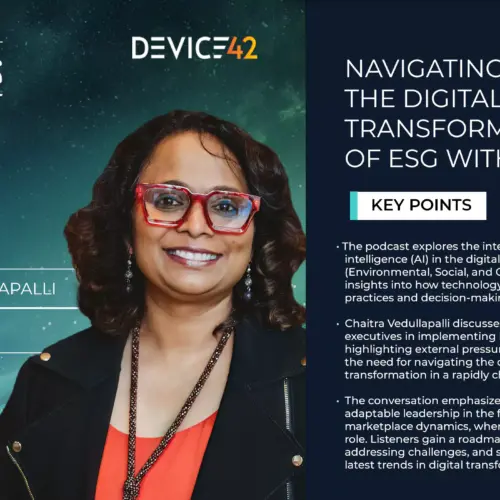Digital transformation is a term that has steadily gained interest over the past few years, but represents a process that isn’t nearly as new as the term itself. Digital transformation is the continuous process of improvement undertaken by businesses of all shapes and sizes, and it encompasses past, present, and future projects alike geared towards modernizing IT. The move of the web to the primarily open source technologies and the new Web 2.0 they powered that was developed and rolled out in the early 2000’s was a period of rampant digital transformation many of us are familiar with. Digital transformation just as well describes the more recent mass migrations of many organizations from physical to virtual infrastructure, and more recently, of everything to the cloud. Other present day digital transformations in are the movements to infrastructure as code, supported by both ‘DevOps’ folk and software like Puppet and Chef, as well as both small and large-scale advancements toward delivering more of ITaaS (IT as a Service).
What the next round of digital transformation holds is uncertain. The only thing we are certain of is that the future of IT is uncertain. It is a bit surprising, however, that business leaders actually fear the uncertainty of the digital future: A recent digital transformation survey by our partner, Dell, found that around 45% of leaders fear becoming obsolete in 3-5 years, and another full 48% have no idea what their industry might look like in 3 years’ time. Furthermore, the study concluded that only a mere 5% of business leaders are classified as “Digital Leaders”. Though these statistics might look dim at first glance, they can also be interpreted as a blank slate of opportunity: any motivated IT organization the world over can learn, innovate, and possibly even become a leader in the next round of transformation.

Discovering Your Transformation Path
For your business to stay current, it must continuously transform and adapt. It doesn’t make sense, however, to digitally transform every time a new technology comes out. Instead, the decision to retire old tech and processes should be business driven, and transformation undertaken only when current infrastructure is no longer cost effective and able to best serve the needs of your business. Staying relevant in the world of continuous digital evolution means your business must regularly ask itself, “how can we best adapt our IT and processes to take advantage of recent technological advances, and make the most from the opportunities they present?”
Many present day IT organizations are looking to the cloud as one option for digital transformation, and for good reason. Is the cloud right for your business? The answer isn’t binary. The possible competitive advantage to be gained by going to the cloud can be second to none before it, if undertaking a cloud transformation makes sense for your company. The cloud has allowed the founding of successful startups like Uber and competitor Lyft that before would have required so much capital outlay it’s not unlikely they would have never gotten off the ground. The increased agility and comparatively lower maintenance costs cloud transformation can offer are attractive to established companies, as well. For the first time in history, a company can build out a next-generation infrastructure with near zero up front capital outlay.
Each company’s transformative path will be unique to their business, as no two are exactly alike. Choosing the transformation opportunities that make the most sense for your business are as important as the transformations themselves. That said, it’s very likely your organization is looking to the cloud – and for good reason. The hybrid and pure cloud deployments that power today’s most competitive digital business allow infrastructures to scale up and down nearly instantly to absorb load when necessary, but can at the same time run lean. The digital transformation to the cloud has raised the bar on agility, flexibility, and cost savings – things that rarely occur in the same sentence in the context of business, and especially in IT. If your IT organization isn’t cloud yet, it is likely it is looking that way. So, what will it take to digitally transform your organization to one that is cloud-first or cloud-only, and is the cloud the right transformation for you? Though the second part of the question is out of the scope of this topic, answering both questions requires you first know all of the details about the state of your current infrastructure.
Device42 Helps You Make Your Digital Transformation
To begin the digital transformation to the cloud, you will need to ensure all the details of what is running across your current IT operation are well understood, and accurately documented, as it’s impossible to plan a migration for an infrastructure you don’t understand. Being able to accurately answer questions like, “What will be affected if this database server goes off?” and “What machines does this web server depend on to operate?” are a must to plan a cloud digital transformation. Device42 helps you answer these questions by making sure you know all the details about your existing hardware, software, services, and the specifics about the interdependencies and interactions between them.
There are many tools that claim they can assist organizations in gaining an understanding of their existing datacenters, but beware of imitators, as many are not as they seem. Getting to the cloud has four main steps:
- Initial discovery: Discovery and document your current operations hardware, software, services, and interdependencies
- Creation and Right Sizing of Each Migration Group: Select one or more applications and their supporting interdependencies to move as a unit. Right size the group appropriately for its cloud migration target by reviewing its resource utilization.
- Migration: Execute the actual, logistical move of the migration group identified in step 2.
- Perform Post-Migration Readiness Checks: Verify that the migrated application, now in the cloud, is functioning as expected, and cut over production traffic. Repeat step 2.
The Device42 CMDB provides IT organizations with all the necessary insight and actionable intelligence to get a cloud digital transformation underway. Other tools on the market offer only a narrow field of view, which, without for instance being able to identify hardware and software interdependencies, makes the rightsizing process manual, error prone, and for large deployments, unrealistic. Others yet focus solely on CPU utilization and trending data, and by themselves cannot tell you everything you need to know to get to the cloud, either.
Device42 helps you accurately discover and build a complete and always up-to-date picture of your infrastructure and all its interdependencies by:

- Agent-lessly discovering all your application dependencies via automated Application Dependency Mapping
- Analyzing thousands of servers without installing software and without needing to configure expensive span ports
- Documenting infrastructure changes as they happen, automatically
- Automatically generating dependency flow diagrams that show the relationship between devices, applications, and application components
- Identifying detailed resource utilization information (CPU, Memory, Network, I/O)
- Showing what services are listening on what ports, and all open ports on each machine
Once Device42 is up and running, it will quickly become apparent that its single source of truth is a powerful ally at your side not only while planning and executing this round of digital transformation, but that it also has much to offer after its completion, as well. While in the planning stages, not only will Device42 accurately identify all the important details and dependencies regarding your current infrastructure layout, but you’ll also easily be able to easily create move groups and prioritize application migrations.
As your digital transformation begins to get underway, turn to Device42’s powerful resource utilization functionality to right-size cloud target instances to each of your move groups. As each stage of your digital transformation nears completion, launch (and re-schedule) an auto-discovery, and allow Device42’s self-documenting CMDB to automatically map out changes, and verify that migration-related changes appear exactly as they should .
Once the core transformation effort is complete, customers can extract further value from Device42 by leveraging its numerous out-of-the-box automations, or by leveraging its open RESTful APIs and/or webhooks to refine and customize and automate workflows and business processes across the organization.
Every company is unique, and each IT organization must work to transform their IT delivery models, discovering the best strategy to align IT with the needs of their unique business. Only through execution of your own well-planned digital transformations can your company continue to exceed ever-changing customer demands for increased agility and efficiency, improved reliability, and lower price. Throughout every stage of the transformative journey, Device42 will prove a powerful ally, providing not only answers to the questions today’s transformation tasks, but continuously undergoing its own digital transformations to ensure it can support the next round of yours.
Download Device42 with Resource Utilization Today!
Check back shortly for our next blog post and learn a bit more about Device42’s powerful new resource utilization features, and how they make identification of Zombie servers in your environment even easier than before. Already in the midst of your digital transformation? Leave a comment below and let us know what you’re doing and how Device42 did (or could have) helped!
If you aren’t already a Device42 user, grab our Free Trial and see for yourself the Device42 Single Source of Truth can help get your digital transformation rolling!



